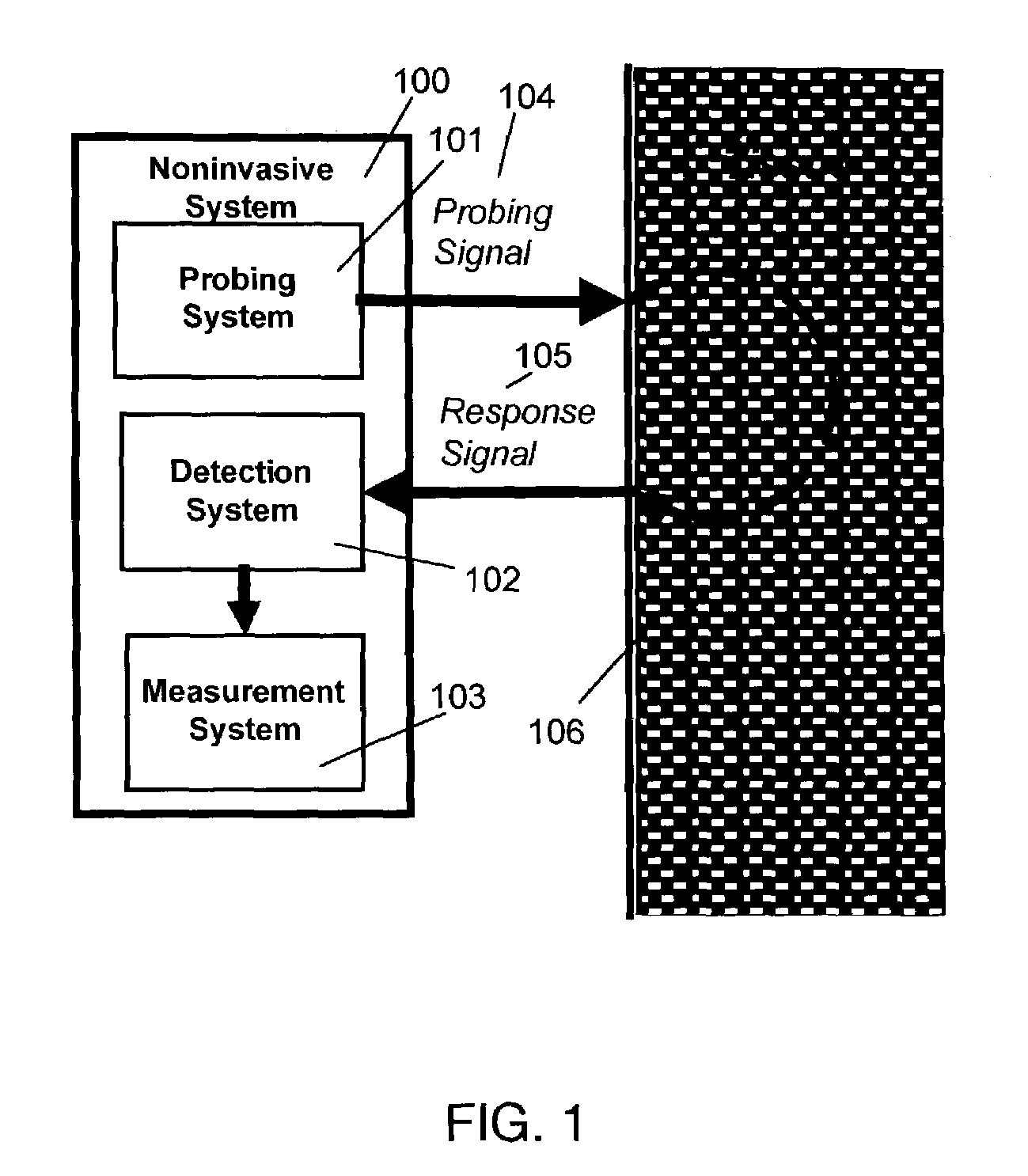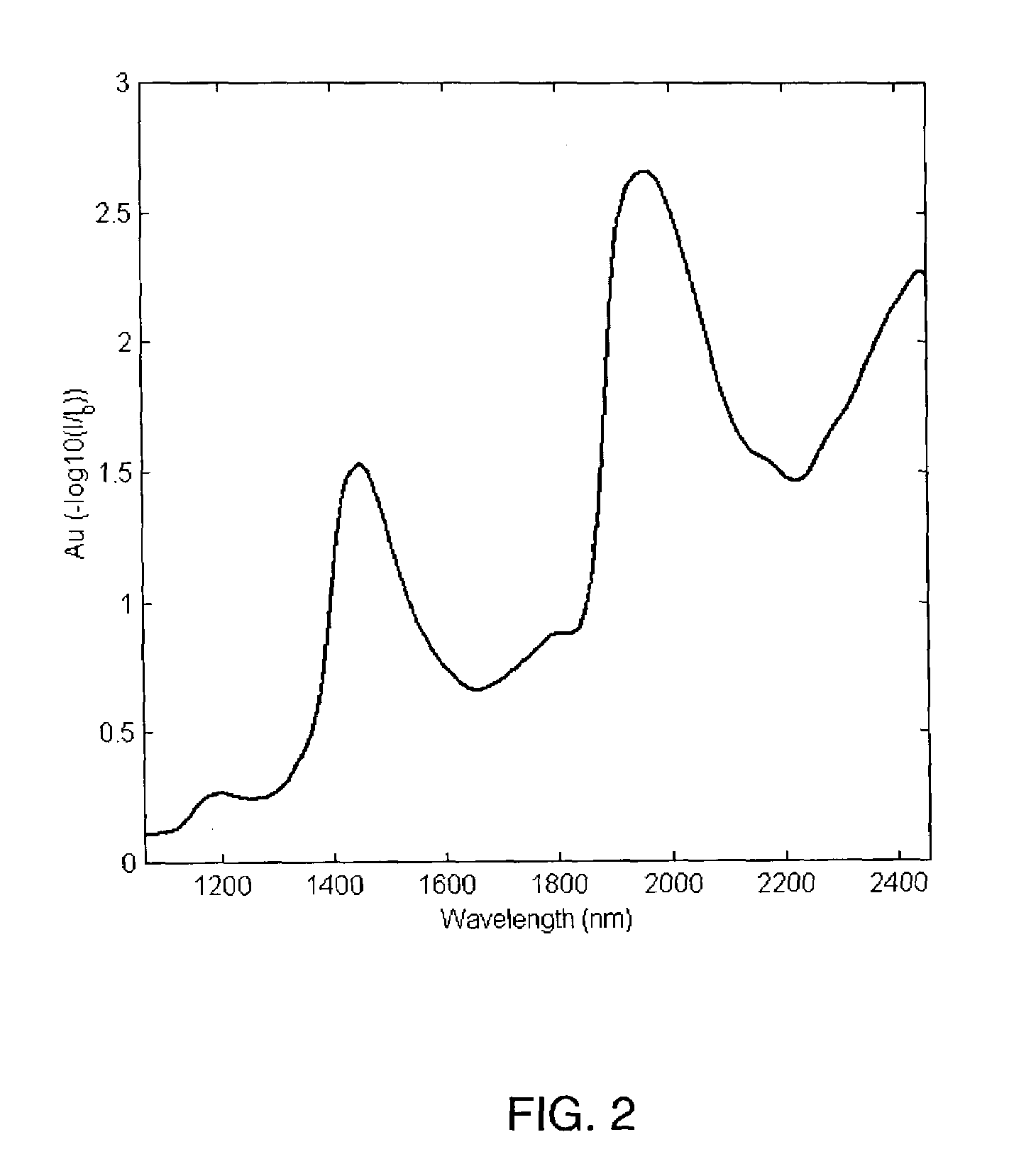Measurement site dependent data preprocessing method for robust calibration and prediction
a data preprocessing and measurement site technology, applied in the field of spectroscopic data processing data technology, can solve problems such as death and disability, discourage regular use, and affect an estimated 16 million americans
- Summary
- Abstract
- Description
- Claims
- Application Information
AI Technical Summary
Benefits of technology
Problems solved by technology
Method used
Image
Examples
Embodiment Construction
[0053]The following discussion describes a solution for improving the accuracy of noninvasive analyte determination through the reduction of major sources of interference. The solution uses a representation of the interference in the form of a tissue basis set to transform tissue measurements such that the signal related to the target analyte is enhanced and more accessible. The transformed measurement is then used as part of a larger set to develop a multivariate calibration model or to estimate the concentration of an analyte in tissue through the application of a previously developed multivariable calibration model.
[0054]The solution comprises the following steps: (1) development of a basis set that includes at least one interfering component, (2) adjustment of noninvasive tissue measurements using the basis set, (3) multivariable analysis for calibration development, and (4) noninvasive analyte measurement. In addition, it is beneficial to both the calibration process and noninv...
PUM
| Property | Measurement | Unit |
|---|---|---|
| wavelength range | aaaaa | aaaaa |
| thickness | aaaaa | aaaaa |
| thickness | aaaaa | aaaaa |
Abstract
Description
Claims
Application Information
 Login to View More
Login to View More - R&D
- Intellectual Property
- Life Sciences
- Materials
- Tech Scout
- Unparalleled Data Quality
- Higher Quality Content
- 60% Fewer Hallucinations
Browse by: Latest US Patents, China's latest patents, Technical Efficacy Thesaurus, Application Domain, Technology Topic, Popular Technical Reports.
© 2025 PatSnap. All rights reserved.Legal|Privacy policy|Modern Slavery Act Transparency Statement|Sitemap|About US| Contact US: help@patsnap.com



